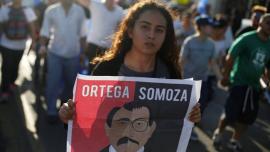 The popular rebellion against the dictatorial government of Daniel Ortega, four-time president of Nicaragua, has been going on now for more than a month. And the Ortega government has continued its violent repression. In the last 47 days, it is reported that 104 people have been killed, while some have been arrested or tortured and others have gone missing. In one of the most atrocious events, government snipers fired on the May 30 “Mothers March” led by mothers mourning the murder of their children. Fifteen marchers were killed and scores wounded.
The popular rebellion against the dictatorial government of Daniel Ortega, four-time president of Nicaragua, has been going on now for more than a month. And the Ortega government has continued its violent repression. In the last 47 days, it is reported that 104 people have been killed, while some have been arrested or tortured and others have gone missing. In one of the most atrocious events, government snipers fired on the May 30 “Mothers March” led by mothers mourning the murder of their children. Fifteen marchers were killed and scores wounded.
Nicaragua: Where Is The Rebellion Going?
Roadblocks and possibilities: The Nicaraguan student insurrection

Canadian internationalist feminist Lori Hanson, who has been working in solidarity with rural Nicaraguans for more than 30 years, has just returned from Nicaragua. Jack Hicks interviewed her for New Socialist. Together, they crafted this piece based on the interview and an article Lori previously wrote for the Greek newspaper, AlterThess. The analysis of an emerging movement in Nicaragua is a work in progress for Lori, who continues to work with Nicaraguans on the deeper meaning of a 44 day-long uprising and the state violence that has accompanied it in April and May, 2018.
Nicaragua—Protest, Repression, Negotiations

The upheaval in Nicaragua that lasted from April 18 to April 21 and the repression that reportedly left 63 dead, 15 missing and 160 injured by gunfire, have both subsided for the moment. The protests halted after President Daniel Ortega announced the cancellation of his proposed changes in the social security pension law. Photographers were among those beaten. Other human rights centers and the Jesuit University of Central America in Managua as well as Nicaraguan newspaper accounts and discussions with people in Managua confirm many of these deaths and injuries.
Since April 22 Nicaraguans have participated in numerous marches, some raising the call for “Peace and Justice,” and many of the participants carrying placards calling upon President Ortega and his vice-president and wife Rosario Murillo to resign. On April 26 an enormous pilgrimage of tens of thousands called for peace and negotiation organized by the Catholic Church.
Are We on the Eve of Another Nicaraguan Revolution?

The government of former revolutionary and Nicaraguan president Daniel Ortega has in the last few days killed at least 24 protestors who were demonstrating against sudden and drastic alterations in a new pension law, changes that would have adversely affected the incomes and lives of tens of thousands. Some 200 were arrested and 20 are missing, according to the National Human Rights Commission. Other protestors, many of them university students, were beaten by the police or by goons armed with pipes sent by President Ortega’s party, the Sandinista Front for the Liberation of Nicaragua (FSLN).
An unforgettable five-day Freedom Fast culminates with 2,000-strong Time's Up Wendy's March through the Heart of Manhattan!

A fast, when done in protest, is a call to arms. While eminently non-violent, it is a battle cry, issued in a whisper.
Janus and the Rank-and-File Strategy: A Reply to La Botz
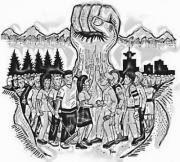
Dan La Botz's article “Trump and the Labor Movement” in the Winter 2018 of New Politics is based on an oral presentation, with the limitations that go with oral presentations. For example, La Botz simplifies the plaintiff’s argument in Janus to the point of missing what is key and unique in it. He states, “The conservatives argue that the union forces workers to financially support political causes with which they may disagree, and so violates their free-speech rights.” This was the issue in the 1977 Abood case.
“A Troll at the Bridge”: Trump, Trumpism, and White Identity Politics
 The rise and rule of Donald Trump embodies much that is disturbingly new from his almost daily narcissistic rants on Twitter to his overt racist, misogynist, and xenophobic public pronouncements. On the other hand, there are historic roots to many of the positions articulated by Trump during his presidential campaign and adopted during his presidency.
The rise and rule of Donald Trump embodies much that is disturbingly new from his almost daily narcissistic rants on Twitter to his overt racist, misogynist, and xenophobic public pronouncements. On the other hand, there are historic roots to many of the positions articulated by Trump during his presidential campaign and adopted during his presidency.
When Karl Marx Was Young and Dashing

Raoul Peck’s The Young Karl Marx is the best buddy movie since George Roy Hill’s Butch Cassidy and the Sundance Kid in 1969. It’s also among the most important films in decades, bringing to a mass audience not just the revolutionary ideas of Marx and his friend and collaborator Frederick Engels in the early days of modern capitalism, but an approach to politics and history that still has no peer. Charting the world as he saw it, Marx wrote: “Accumulation of wealth at one pole is at the same time accumulation of misery, agony of toil, slavery, ignorance, brutality, mental degradation, at the opposite pole.” Has anything changed?
The Iran Protests: The Revolution is Dead. Long Live the Revolution!
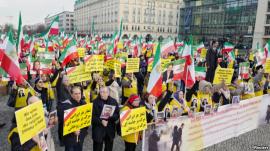
An Alternative to the Politics of “National Security” Emerges
Days of protests in Iran have caught statesmen, analysts and observers by surprise, even though the anti-austerity and anti-establishment sentiments behind this primarily working-class revolt have been brewing for years. All the same, surprise is not a common reaction across the media.
“Smitten Gate," a Brutal Anti-war Novel

The author himself lets you know at the start that this book is going to be very harsh. After the end of the chapter titles, Stan Goff writes, “Warning to readers who have experienced violent trauma or sexual assault. This book contains portrayals of extreme violence, including combat, murder, and rape.” His purpose is not to titillate, but to reveal. There are some brief loving sexual passages, but the descriptions of sexual violence and killings are there to repel you.
Vivek Chibber’s "Road to Power" Is Not

Vivek Chibber’s “Our Road to Power” published recently in Jacobin—oddly enough written as a commemoration of the Russian Revolution of October 1917—codifies a strategy for what is one of the dominant tendencies in the American left today: social democracy. The principal argument of “Our Road to Power” (a title chosen by Jacobin’s editors, perhaps alluding to German Social Democrat Karl Kautsky’s The Road to Power) is that a “ruptural strategy” is off the agenda. By “ruptural strategy” Chibber means one that is predicated upon a crisis of the economic and political system leading to the breakdown or to the overthrow of the state. Chibber believes that since the power of the state is so great today—because of its legitimacy, its coercive power, and its power of surveillance—a revolutionary strategy is ruled out. It would be, he says, “hallucinatory” to think otherwise.
On the One Hundredth Anniversary of Two Revolutions: Russia and Georgia, Bolshevism or Menshevism

Eric Lee. The Experiment: Georgia’s Forgotten Revolution, 1918-1921. London: Zed Books, 2017. 259 pages. Timeline. Notes. Index. (For further information see: http://www.ericlee.info/theexperiment/)
In his new book The Experiment: Georgia’s Forgtten Revolution, 1918-1921 the journalist and historian Eric Lee does two things. First, he tells the little known and complicated story of the Georgian Revolution and the short-lived independent state that it created.
Walter Benjamin and the Political Practices of the Alt-right

The Work of Art in the Age of Mechanical Reproduction
Walter Benjamin was one of the great analysts of liberal capitalism during a time when its days seemed numbered and fascism was ascendant across Europe. Much of his work is taken up with looking at how the cultural products and processes characteristic of a civilization are reflective of the inner psychic and spiritual tensions roiling beneath the surface of hegemonic ideologies.
Why should we care about the Consumer Financial Protection Bureau?

In the early hours of November 27th, employees at the Consumer Financial Protection Bureau (CFPB) woke up to a world of contested allegiances. Advocated by Senator Elizabeth Warren and set up by the Dodd-Frank Wall Street Reform and Consumer Protection Act, CFPB was created in 2011 as an independent Federal agency tasked with protecting consumers in the financial sector. Since it was this sector’s predatory exploitation of low-income racialized communities that triggered the subprime mortgage crisis, this agency was intended to regulate finance across consumer services like mortgages, student loans, and credit cards. As such, the founding of the agency received large support from consumer groups and their Democratic allies in the Federal administration. Republicans, for their part, dutifully (and unsurprisingly) rendered the agency as another burden on the “free” market.[i] Such conflicts are hardly news and government employees are in this sense always in the precarious position that their jobs might be discarded with every new administration. Rarely, however, do these conflicts take the absurd character we could witness the following few days.
John E. Chiaradia, 1926 – 2017: Political Activist
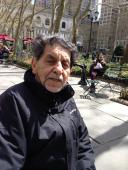
John E. Chiaradia was a longtime reader and sometime contributor to New Politics.
How does one come to political activism? Are we influenced by the times, by our personal experiences, by some innate quality within us, or are each of these just the necessary ingredients of activism? John (Giovanni) Emilio Chiaradia left Italy as a child, a political refugee from mid-20th-century Italian fascism. His family escaped the turmoil engulfing their country for the welcoming haven of the United States, landing in New York City and eventually settling in central California. There they were once again confronted by nationalist politics and uprooted from their home. They were compelled to leave California following the bombing of Pearl Harbor as John’s mother, Antoinette, was not yet a naturalized citizen. In the wake of the war, the US government deemed all non-naturalized people from Axis countries, and even citizens in the case of Japanese Americans, to be potential threats to national security. They were commanded to vacate a 100-mile exclusion zone from the west coast. The family was forced to leave what few possessions they had and return to the Bronx.
Is Change Possible in Mexico?

Mexicans, worse off than at any time in the last 100 years, are asking themselves as the July 2018 elections approach: Can Mexico change? Can an election change Mexico?
Mexico is a disaster. It has become increasingly violent, the economy grows too slowly to absorb the ever-expanding workforce, and wages are below those of China, though costs are more like those in the United States.
Post-Modern Trumpism and Loneliness: The Rise of Vulgar Authoritarianism
 Loneliness
Loneliness
In Hannah Arendt’s pioneering book The Origins of Totalitarianism, she criticized the failure of many to understand the appeals of fascism to modern citizens. She wrote that many observers gave fairly rote justifications for its rise and appeal in an apparently advanced and enlightened country like Germany, the birthplaces of Goethe, Kant, and Beethoven. Some claimed that it was the depressed economy that was responsible. Others in the German context pointed to defeat and humiliation in the First World War. Some reactionary conservatives claimed it was declining moral standards and the collapse of religiosity. And Arendt accepted that many of these might have something to do with it. But her ultimate explanation was far simpler and yet strangely more acute. Modern Germans were lonely.
Whither Catalonia? An interview with Josep María Antentas

Dan La Botz, a co-editor of New Politics, interviewed Josep María Antentas, teacher of Sociology at the Universitat Autònoma de Barcelona (UAB) and anticapitalist activist.
DL: The Catalan independence movement and its suppression by the Spanish state have garnered the attention of the world. What has been your attitude toward the question of Catalonia?
JMA: My traditional position is the defense of the right to self-determination, with the idea that when a group wises to exercise this right its position must be made specific. In the current situation and since the independence movement began in 2012, the defense of a “Yes” vote has a more democratic content than the “No” vote, which is associated exclusively with the reactionary defense of the Constitution and the political regime.
Leftist Candidate Jabari Brisport of DSA Makes Strong Showing in Brooklyn

Jabari Brisport, a member of the Democratic Socialists of America (DSA), made an extraordinarily strong showing in his first bid for the New York City Council. Running on both the Green Party and Socialist lines in Crown Heights, District 35 of Brooklyn where he grew up, Jabari won almost 30 percent of the vote, receiving 8,619 votes. He was defeated by Democrat Laurie Cumbo, who took 68 percent of the vote while the Republican Christine Parker got just 4 percent.
Jabari ran as a socialist in a diverse district with a mixed population of African Americans, Afro-Caribbeans, orthodox and Hassidic Jews, upper middle class white newcomers, and young hipsters. The district has a population of 124,170, larger than many cities. The 2017 election saw one of the lowest turnouts in years. Only about 22 percent of the 5,053,842 registered voters in New York City as a whole cast ballots in the election.
Weinsteins in the Workplace: Will Unions Be Part of the Solution Or the Problem?

The exploding national debate about workplace harassment of women by powerful bosses or male co-workers is a great opening for unions to demonstrate their importance as one form of protection against such abuse.
Unfortunately, when unions are not pro-active on this front in their dealings with management or, worse yet, allow bullying or sexual harassment among staff or members, their credibility and appeal as a sword and shield for women (or anybody else) is greatly reduced.
The Complete Guide to China’s Leadership Re-shuffle
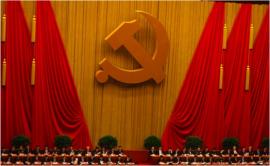
This article was received before the official announcement of the new leadership. – DL
In a highly choreographed ritual, seven suited men will this Wednesday stride onto a stage in Beijing, hair dyed jet black, led, naturally, by Chinese President Xi Jinping. What to the casual observer appears to be a rigid, inconsequential ceremony is in fact the unveiling of the most powerful political body on earth.
